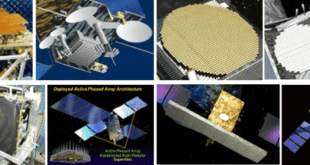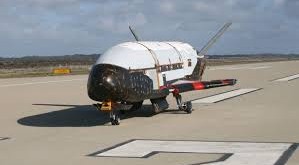The space is also becoming increasingly militarized many countries are developing killer microsatellites and other antisatellite weapons (ASAT) that could be used to damage other satellites.
Potential adversaries have the ability to focus on temporary, reversible effects such as jamming or dazzling which denies or disrupts the satellite versus permanent and non-reversible damage to systems, typically caused by destroying or degrading satellite capabilities. Attacks can be non-kinetic such as high-power microwave and lasers or cyber-attacks. Attacks can also be kinetic such as direct assent or co-orbital ASAT weapons, attacking ground stations or communication lines, or attacking critical satellite systems such as power supplies and/or solar arrays
There is also emerging thrust on space robots which can perform repair of satellites and which could also put to deorbit adversary’s satellites. They could provide complete awareness of adversary’s activities in space so that one can take counter actions.
Space superiority is not only about having advanced space technology on-orbit; it also depends on the protection of current space assets and preparing to counter an enemy’s space or anti-space assets. Therefore there is requirement of satellite resilience enabling mission assurance, defined as a process to protect or ensure the continued function and resilience of capabilities and assets even uder threat enironment.
According to a recent report by the U.S. Defense Intelligence Agency, more countries and businesses are participating in satellite construction, space launch, space exploration and human spaceflight than ever before because both technical barriers and costs are falling, but at the same time some foreign governments are developing capabilities to threaten others’ ability to use space, the written announcement points out.
Building upon a 33-percent funding increase offered by the 2019 budget proposal, Air Force officials say the service is increasing research, testing and experimentation for Air Force Space initiatives and moving quickly toward more of a “war footing” in the Space domain.
“The space budget focuses on building more jam-resistant GPS satellites, improving missile warning, improving space situational awareness and increasing the nation’s ability to defend its most vital assets on orbit. It adds additional resilience features and user protection to existing satellite communication systems,” Maj. William Russell, Air Force Space spokesman, told Warrior Maven.
In response to spce threats countries are enhancing the space situational awareness (SSA) shose objective is to identify the location of every object orbiting the Earth, why it is there, what it is doing, and to predict what it will be doing in the future. Its aim is to track and understand what exactly is in orbit from either space or from the ground. This knowledge enables the management of space assets and the exercise of a level of control over the space environment. SSA is essential enabler both for offensive and defensive counterspace operations
Some satellites may be hardened against electromagnetic interference and radiation effects, but currently, none can withstand an ASAT attack outside of the inherent ability for a satellite to maneuver. Therefore, the solution of escort satellites is most valuable. A possible solution is to divorce the defensive operations from the mission satellite and transfer those capabilities to an escort satellite.
Escort satellites would be able to conduct defensive operations necessary to protect mission satellites against enemy attack. These escort satellites will have the defensive operations capabilities necessary to thwart the attacker and keep the victim satellite safe. These escorts can either sacrifice themselves in defense of the National Intelligence satellite or perhaps have defensive countermeasure payloads able to thwart the ASAT.
Countries are also taking various measures to “harden” satellites against attacks including various countermeasures, stealthy satellites and maneuverability tactics. They include On-board passive defenses, such as encryption, radiation hardening, anti-jam, and other-directed energy protections.
The vulnerability of the satellite depends to a great extent on its location. Satellites can enhance their survivability by controlling their radar and thermal signatures through various stealth coatings. Indeed, the US reportedly launched a stealth satellite to geostationary orbit as early as 1976: the LES-8 satellite was nuclear-powered, so it did not have large solar panels that reflect sunlight and make the satellite glint, and it had a mirror so that sunlight hitting its main body would not be visible from the ground.
The USA apparently launched a more evolved version of geostationary stealth satellite in 1990. This satellite, known as Prowler, was only detected in 1998 by civilian observers, likely after it had completed its primary mission and was taken offline. Since optical observations are the most effective way to track objects in geostationary orbits, making satellites that reflect sunlight away from the ground, or that have a very small size, can be enough to hide them.
Regarding Low Earth Orbit (LEO) satellites, which constitute the bulk of reconnaissance satellites, radar is a better tool to detect them as it is not affected by weather or sunlight. The USA is also thought of having launched a stealth reconnaissance satellite in 1990, and another one in 1999. Codenamed MISTY, they would have been aimed at avoiding detection by the USSR, to see what the Soviet did not want the US to see and were hiding when they knew a satellite was overhead.
Another way to hide a satellite is to have it look like a piece of debris, or a much less capable satellite. That way, even if it is detected, it will not be a priority target, and will likely survive the opening shots of a war in space. Again, this is not purely theoretical: MISTY was deployed alongside a cloud of debris, to make it look like it had exploded and prevent observers from realizing it had simply disappeared.
If detection cannot be avoided, then the adversary knows there is a threatening satellite in orbit. The next step is to avoid being tracked, so that the precise position of the satellite is not known, so the enemy does not have a firing solution on it. One solution to evade tracking is to maneuver: the orbit of a satellite is predictable once its speed and position are precisely known, because the only force acting on it is gravity.
Ground sensors typically see satellites once or twice a day, for a few minutes, and rely on the laws of orbital mechanics to know where they are the rest of the time. However, if the satellite uses its engines to change its orbit, then the information obtained before becomes partly obsolete. The more the satellite changes its orbit, the further away it will be from its predicted position and thus the less likely it will be reacquired quickly. However, changing the orbit is usually done by consuming chemical fuel, and satellites carry a limited supply, so they cannot maneuver all the time.
Another important technology is Autonomy which provides a means to build resilient networks that can reconfigure themselves in the face of such attacks, preserving essential functions under duress. It also provides a mechanism for significantly reducing the extensive manpower requirements for manual control of satellites and generation of space situation awareness through real-time surveillance and analysis of the enormous number of objects in orbit around the Earth
Sandia launches an autonomous satellite protection program.
Researchers at Sandia National Laboratories launched a seven-year mission campaign in Oct 2019 to develop the science, technology and architecture needed for autonomous satellite protection systems.
The campaign, called Science and Technology Advancing Resilience for Contested Space (STARCS), will fund dozens of Laboratory Directed Research and Development projects that focus on three critical areas: threat-defended hardware, which is technology that protects satellite processors, circuits and systems from attacks; cognitive analytics, or software algorithms that can rapidly and independently detect, adapt to and defeat threats; and sensor protection that shields sensors from harm.
The intent of the campaign is for Sandia to take on a large national priority through its internal research and development investments, Jeff Mercier, one of the campaign’s senior managers, said in a written announcement. “Sandia has a long and successful history in space systems engineering. We need to ensure our payloads survive against emerging threats in space.”
The three STARCS research areas—threat-defended hardware, cognitive analytics and sensor protection—will develop a satellite’s capability to automatically detect threats and defend itself to ensure that optical, radio frequency, reconnaissance and communications assets are preserved and operational during an attack. The campaign is also pursuing reversible threats—actions that temporarily disable an attacking satellite without destroying it.
Sandia launched 12 STARCS-related laboratory directed research and development projects this month and may see even more projects per year for the rest of the campaign, which will run through 2027.
References and Resources also include:
https://www.afcea.org/content/teaching-satellites-self-defense
https://satelliteobservation.net/2018/03/08/contested-space-ii-countermeasures/
 International Defense Security & Technology Your trusted Source for News, Research and Analysis
International Defense Security & Technology Your trusted Source for News, Research and Analysis

